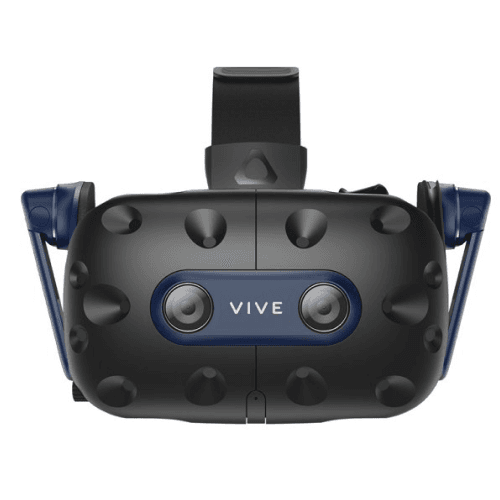When VR burst onto the scene in 2016, it was the HTC Vive that led the charge. The Oculus Rift and Sony’s PlayStation VR headset offered compelling alternatives, but if you wanted the very best quality, the HTC Vive got the nod. Several variants arrived in the years that followed, most notably the upgraded HTC Vive Pro in early 2018, but the quality bar was always set to the highest standard.
Come 2022, the next phase of virtual reality technology is starting to find its feet. Oculus Quest 2 has made strides in the wireless VR space. Valve Index has brought finger-tracking technology into the mix. While Sony’s PlayStation 5 has the hardware might to bring high-quality VR with PSVR 2 to the console space.
Into this fight storms the HTC Vive Pro 2. It comes out swinging, there’s no doubt. But it’s on tired feet and doesn’t quite land the knockout blow.
Features
- Best in class 5K display
- Display Stream Compression keeps minimum specs competitive
- Real world interface improvements
- Backwards compatible
The legacy of the HTC Vive headset demands quality and the HTC Vive Pro 2 steps up. The 5K display — made of 2 x 2.5K displays — with a 120Hz refresh rate and 120-degree field-of-view is as good as it gets. Those 2.5K displays are fast-switch, real RGB subpixel, dual-stacked LCD screens too.
To better handle the higher data that comes with being able to enjoy visuals in greater detail, the HTC Vive Pro 2 utilizes Display Stream Compression. As I will go into below, this does a decent job, relatively, of keeping the minimum PC specifications down.
Elsewhere in the headset you’ll find the same built-in high-res headphones and integrated dual microphones. As for sensors, there’s a G-sensor, gyroscope, proximity sensor and IPD sensor all funneled through SteamVR Tracking V2.0.
There are front-facing cameras that make for an in-depth user-friendly experience, combined with some improvements to the Steam VR interface. It’s much easier to activate passthrough so you can see the real world without taking off your headset, as well as remotely view and interact with your desktop. This negates you from having to repeatedly remove your headset to reduce fogging issues.
Everything else in the headset is older technology already available. I’ll go into detail about the pros and cons of this in my final verdict below, but the main pro is that it’s fully backward-compatible. This means peripherals such as the Wireless Adapter, Vive Tracker 3.0 and the Facial Tracker will work just fine, as well as all the software available through VivePort and Steam VR.
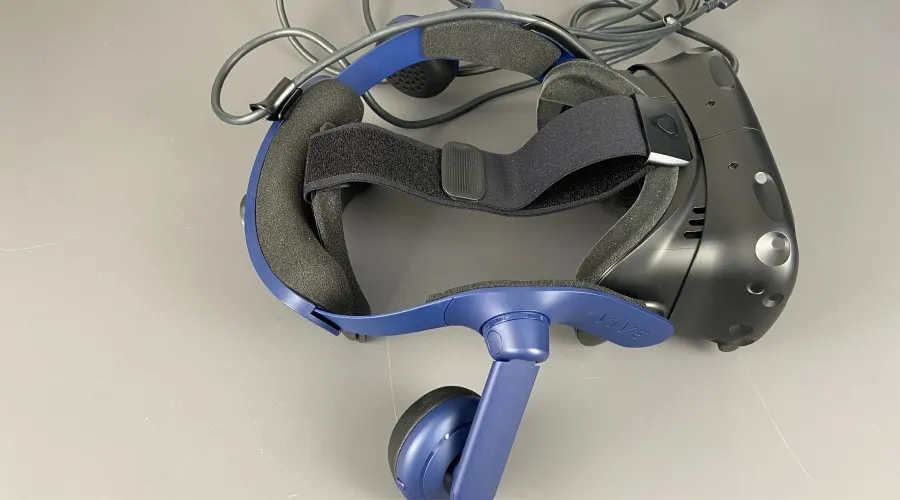
Image: Chris Stead/Finder
As for a cons overview, it’s easiest to explain by pointing to the features that the HTC Vive Pro 2 doesn’t have.
The headset doesn’t have built-in cameras for tracking, unlike the HTC Vive Focus 3 which has four. The controllers don’t have the finger-tracking of Valve’s own Index, nor the improved battery life found in the new HTC Focus 3 controllers.
The eye-tracking of the Vive Pro Eye is absent too. And it’s still tethered to the PC, although that’s a necessary evil if you want the very best visual experience.
HTC Vive Pro 2 minimum specs
Of course, your PC must be good enough to run the VR software. Even the most rudimentary experiences require some serious might as the software effectively needs to run twice simultaneously to create the VR effect, once for each eye. That said, despite the increased visual acuity of the HTC Vive Pro 2, the minimum PC specs aren’t too outrageous.
Minimum CPU: Intel Core i5-4590 or AMD FX 8350 | Memory: 8GB RAM | GPU: Nvidia GeForce GTX1060 or AMD Radeon RX48 | OS: Windows 8.1 or Windows 10 | Video out: DisplayPort 1.2 | Ports: 1 x USB 3.0
Recommended CPU: Intel Core i5-4590 or AMD FX 8350 | Memory: 8GB RAM (or more) | GPU: Nvidia GeForce RTX 2060 or AMD Radeon RX 5700 | Video out: DisplayPort 1.4 | Ports: 1 x USB 3.0 | OS: Microsoft Windows 10
Setup
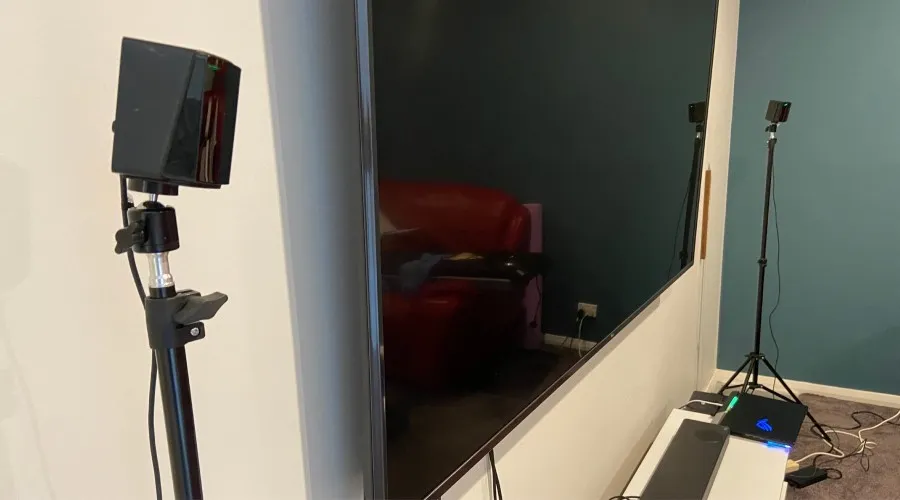
Image: Chris Stead/Finder
- Requires a lot of space
- Challenging for technology newcomers
- Poor power cable design
- Laptop must have correct ports
In the near future, VR aficionados will look back at the HTC Vive Pro 2 setup requirements like we were pathetic cavemen.
I should preface what comes next by saying that I love VR — I think it’s a truly futuristic and mind-blowing experience that’s worth its setup pains. But you’ve got to know what you’re getting into. If you don’t, you may not only find yourself frustrated, but unable to even use the device you have just purchased.
Be warned, you need a significant space to successfully use HTC Vive Pro 2. The company itself suggests a 6m x 6m room, but that’s ludicrous. Who has that?
Happily, I can tell you I used it in my 4m x 4m loungeroom, which included a large L-shaped couch, without too many issues. But when I drew out my play space during setup, running the controller around the border of the space where you can play, I just crept over the minimum threshold.
The base stations also need good line-of-sight on that space. The recommendation is to mount them on your walls, which is obviously an invasive request and requires some basic carpentry knowledge. Alternatively, you can screw them into stands — sold separately — which is the approach I took.
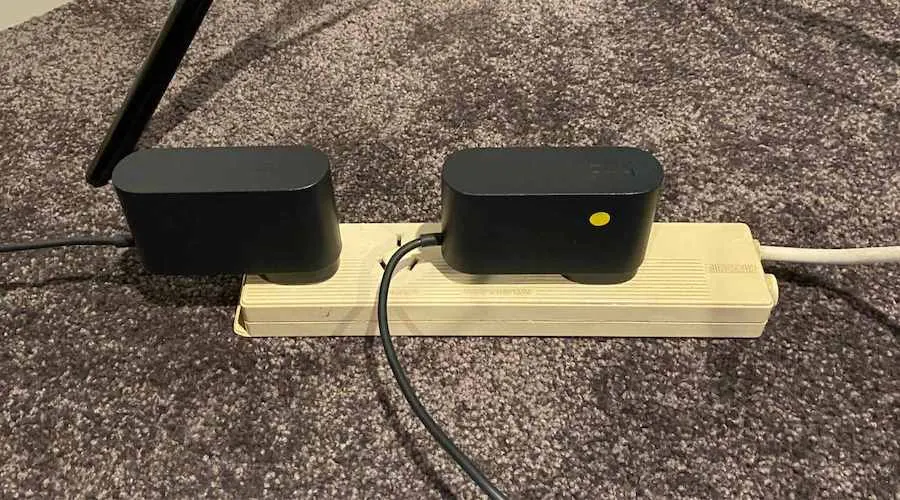
Image: Chris Stead/Finder
Got enough power points?
You need so many power points: one for the headset, and one each for both base stations. You then need another two if you want to charge your controllers between uses. Plus a sixth if you are playing off a laptop, as I did, since gaming will drain its battery in a jiffy.
All the plugs have large, boxed ends that point to the right. This means you can’t sit them next to each other in a dual wall power point, or even a quad power-board.
Why they couldn’t alternate the way they faced, left then right, I’ll never know. That’s lazy design.
Finally, your computer or gaming laptop needs to be USB-C- or DisplayPort 1.2-enabled. You can’t get a DisplayPort to HDMI adaptor and expect any joy. And I won’t even get into all the software downloading of all the software and device syncing of all these devices, which is a chore in itself.
I’m not going to lie: I found the setup a really painful process. I had cables and power boards everywhere; had to move a lot of stuff to get the space right; needed to buy additional tech to make parts work; and had hits and misses trying to get everything to sync properly. One base station even had to be replaced.
I got it all working in the end, but setting up the HTC Vive Pro 2 could be a bridge too far for consumers who aren’t technologically savvy. In my opinion, this is counter to what you expect when you’re paying for high-end tech. However, this could simply still be the necessary evil for those who want the ultimate VR experience in 2022.
Design
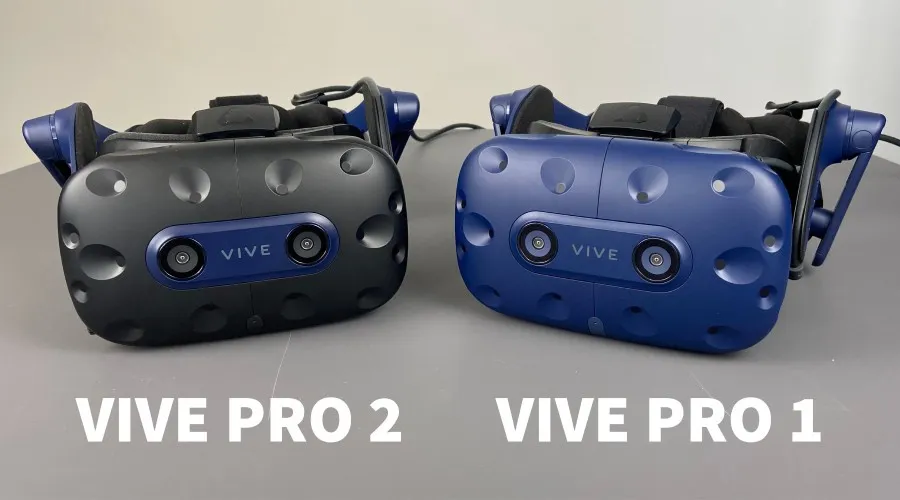
Image: Chris Stead/Finder
- Better display in same footprint
- Very comfortable with improved weight distribution
- 57mm to 70mm lens range
- Cord is heavy and cumbersome
When you place the HTC Vive Pro and the Vive Pro 2 next to each other, it can be tough to tell the difference. Indeed, if not for the black front on the Pro 2 versus the blue front of the original, you could easily get them confused. They are more or less identical in appearance.
It’s to HTC’s credit that it has been able to upgrade the quality of the display inside the same headset footprint, without making it any bigger or heavier. And it’s an easy headset to adjust to multiple sizes and shapes too. The dial that moves the back strap is robust, strong and reactive, while the front piece offers a 57mm to 70mm interpupillary (IPD) adjustment range.
My kids used it as effectively as I did as a result, and switching between our vastly different head sizes was a breeze.
I would have liked to see some design evolution, with the headphones built into the device. They produce surprisingly good sound, especially in the way they block out ambient noises. I love the way they can be moved outwards when you need to hear the outside world and repositioned over the ears.
The on-cup volume is handy, but if they sat over the ear rather than against them, it would provide added headset support plus better immersion and comfort.
While the two headsets may look identical, you can feel a noticeable difference when you put them on. The new HTC Vive Pro 2 feels much more balanced with its weight distribution.
The premium padding also ensures no pain points on the face and blocks all external light. There’s no doubt that it’s heavy, but the design is smart enough for it to remain comfortable over long sessions.
The biggest drawback is the thick heavy cord that dangles from the back. There’s been no improvement here. I also found that it twisted and tangled on itself easily, reducing the length available and creating a tripping hazard.
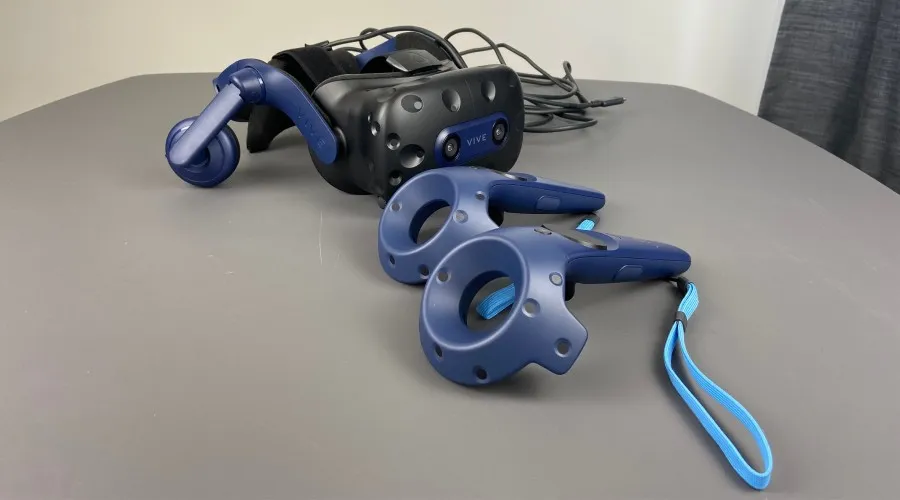
Image: Chris Stead/Finder
Using your own audio
The option is available to HTC Vive Pro 2 owners to remove the built-in headphones and instead connect their own headsets. If you’ve already got a great gaming headset, this reads like a welcome feature.
However, its design is a bit cumbersome. You must remove the face cushion to find the USB-C port and then connect it and replace — there’s no 3.5mm audio jack.
It’s awkward and feels destructive, and I wish the USB-C port was more easily accessible.
Performance
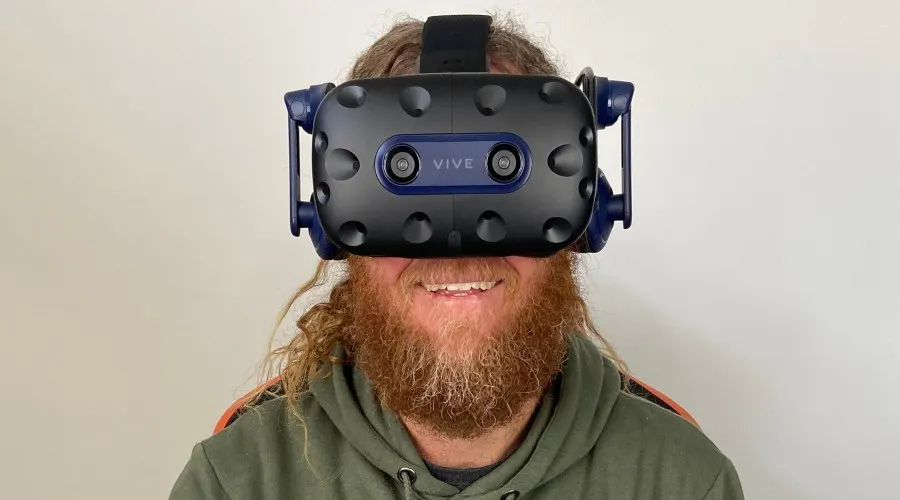
Image: Chris Stead/Finder
- Stunning VR experience
- Impressive tracking
- Lots of fun games
- Slight blur at screen edges
It may come across that I’m being quite critical of the HTC Vive Pro 2: I’ll admit to holding this device to a high standard. It does come at a premium price, after all, and pitches itself as a premium offering.
A lot of what I found in the design, features and setup didn’t always meet the standard of what I expected from it. But when it comes to performance: Wow!
Ultimately, it’s the VR experience you’re coming for and if you can deal with the fringe shortcomings, then the performance of the device will blow you away. It looks exceptional and it sounds great. This is true immersion.
And that extra clarity in the display makes a major difference, blurring the line between what we might expect a game to look like inside and outside of VR. The “screen door effect” that has plagued VR is all but eradicated in the HTC Vive Pro 2.
It’s not all roses, though. The way the new display is built in seems to have created some peripheral blurring. I noticed a kind of “weathered glass” appearance along the edges when moving my eyes about.
It’s a bit distracting, but encourages you to move your head rather than your eyes to explore worlds. Once you’re immersed, you tend to forget about it.
And to further clarify: Relying on old tech — like three-year-old controllers — bites back when it comes to issues like battery life. They barely last six hours or so.
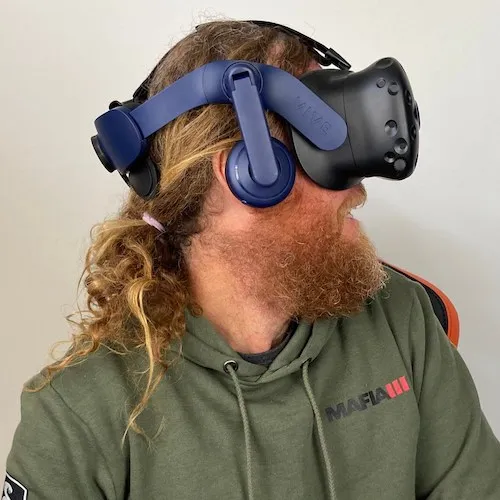
Image: Chris Stead/Finder
Impressive tracking
The main title I tested on the HTV Vive Pro 2 was the brilliant Half-Life: Alyx. Obviously, the VR headset is heavily reliant on the quality of the software, but when you match it with a game as nuanced in its design and craft as Half-Life: Alyx, all that the HTC Vive Pro 2 has to offer shines through.
While I lament the setup, the tracking is impressive. I was unable to test Vive Tracker 3.0 or Face Tracker, which are additional costs even on the bundle offering.
But the Base Stations 2.0 still deliver 1:1, instantaneous controller and head tracking. In particular, I was amazed by how subtle hand movements, like flicking your wrist, had real in-game effects.
Other titles I tested included the beautiful Moss, the arcade boxer Gorn, underwater survivalist title Subnautica and I also mucked around with Google Earth VR. The clarity and the buttery-smooth performance is a world away from what you might have experienced back in 2016. The library of titles now available is diverse and rewarding.
If you want nothing but the best, then you have your answer. You only need to be open to spending money and patient with your setup to get it.
Should you buy the HTC Vive Pro 2?
- Buy it if money is no object in your pursuit of the best possible VR experience on the market.
- Don’t buy it if you don’t have the space and patience to set it all up properly.
It’s important to note that the HTC Vive Pro 2 isn’t the fully-fledged sequel that its name would imply. Indeed, it’s released predominantly as a headset only, meaning existing gamers in the HTC Vive ecosystem don’t need to start from scratch with their entire setup. They only need to switch out the headset.
On paper this might seem like a fan-friendly approach. But there’s a catch. While you do get a much-improved VR headset that’s considerably better than its predecessor and anything else out in the market, it’s limited by its predecessor’s connective technology.
It’s still tethered by a thick and cumbersome cable that is forever in your way. The controllers are three years old and don’t take that next step of offering finger-tracking support.
And it still relies on base stations that require some serious space in order to enable room scale. So, it’s a case of more of the same but better. Iteration, not evolution.
Is that good enough when you’re retailing for up to $799? And what if you’re new to the scene: Do you want to pay $1,399 for the full setup, where half the technology is dated out of the box?
Those are the questions you need to ask yourself. I can’t help but wonder if the Vive Pro 2 will end up remembered as a minor stepping-stone, like a mid-gen console update, in the years to come. But damn, you can’t argue with the end experience. It’s VR at its most stunning and after I soldiered through the set-up pains, I was truly blown away.
- Stunning VR experience
- Best display on the market
- Very comfortable headset
- Big and diverse software library
- Expensive, especially given it’s not a full new ecosystem
- Too reliant on aging connective technology
- Set-up is a mission
- Blur at edges of FOV may be distracting
Pricing and availability
The HTC Vive Pro 2 retails for up to $799 for the headset only. There are some bundles available for those entering the HTC Vive ecosystem for the first time, but be watchful of them. Full kits can run you anywhere between $1,050 and $1,399. The HTC Vive Pro 2 was released on June 4, 2021.
Specifications
Minimum
Recommended
Whether products shown are available to you is subject to individual provider sole approval and discretion in accordance with the eligibility criteria and T&Cs on the provider website.
Are you visiting from outside the US?
Ask a question


